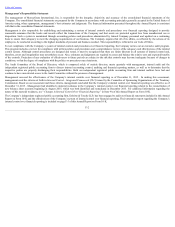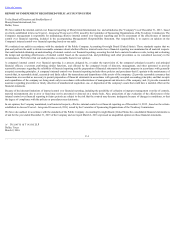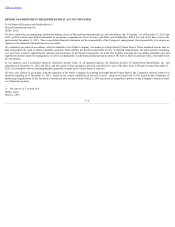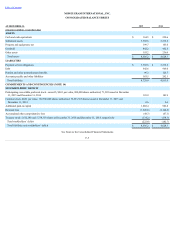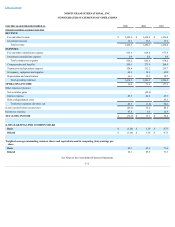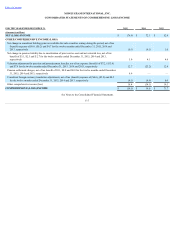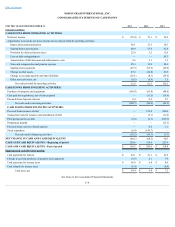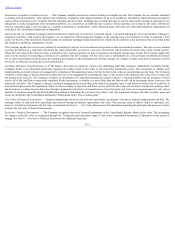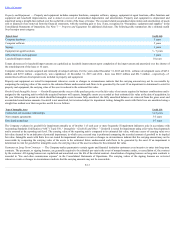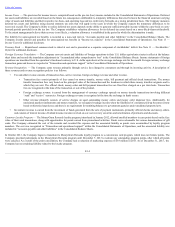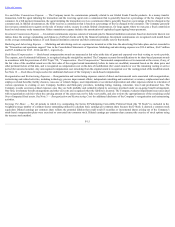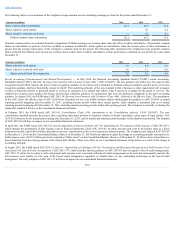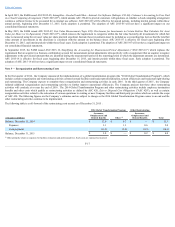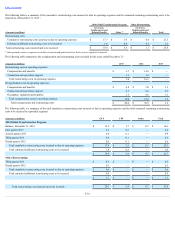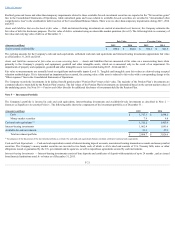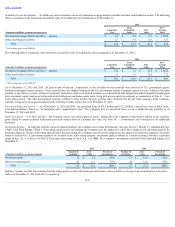MoneyGram 2015 Annual Report Download - page 76
Download and view the complete annual report
Please find page 76 of the 2015 MoneyGram annual report below. You can navigate through the pages in the report by either clicking on the pages listed below, or by using the keyword search tool below to find specific information within the annual report.
Table of Contents
Investments(includedinsettlementassets) — The Company classifies securities as interest-bearing or available-for-sale. The Company has no securities classified
as trading or held-to-maturity. Time deposits and certificates of deposits with original maturities of up to 24 months are classified as interest-bearing investments
and recorded at amortized cost. Securities held for indefinite periods of time, including any securities that may be sold to assist in the clearing of payment service
obligations or in the management of the investment portfolio, are classified as available-for-sale securities. These securities are recorded at fair value, with the net
after-tax unrealized gain or loss recorded as a separate component of stockholders’ deficit. Realized gains and losses and other-than-temporary impairments are
recorded in the Consolidated Statements of Operations.
Interest income on residential mortgage-backed securities for which risk of credit loss is deemed remote is recorded utilizing the level yield method. Changes in
estimated cash flows, both positive and negative, are accounted for with retrospective changes to the carrying value of investments in order to maintain a level
yield over the life of the investment. Interest income on residential mortgage-backed securities for which risk of credit loss is not deemed remote is recorded under
the prospective method as adjustments of yield.
The Company applies the cost recovery method of accounting for interest to its investments categorized as other asset-backed securities. The cost recovery method
accounts for interest on a cash basis and deems any interest payments received as a recovery of principal, which reduces the book value of the related security.
When the book value of the related security is reduced to zero, interest payments are then recognized as investment income upon receipt. The Company applies the
cost recovery method of accounting as it believes it is probable that the Company will not recover all, or substantially all, of its principal investment and interest
for its other asset-backed securities given the sustained deterioration in the investment and securities market, the collapse of many asset-backed securities and the
low levels to which the securities have been written down.
Securities with gross unrealized losses as of the balance sheet date are subject to a process for identifying other-than-temporary impairments. Securities that the
Company deems to be other-than-temporarily impaired are written down to fair value in the period the impairment occurs. The assessment of whether such
impairment has occurred is based on management’s evaluation of the underlying reasons for the decline in fair value on an individual security basis. The Company
considers a wide range of factors about the security and uses its best judgment in evaluating the cause of the decline in the estimated fair value of the security and
the prospects for recovery. The Company considers an investment to be other-than-temporarily impaired when it is deemed probable that the Company will not
receive all of the cash flows contractually stipulated for the investment, or whether it is more likely than not that we will sell an investment before recovery of its
amortized cost basis. The Company evaluates residential mortgage-backed and other asset-backed investments rated A and below for which risk of credit loss is
deemed more than remote for impairment. When an adverse change in expected cash flows occurs, and if the fair value of a security is less than its carrying value,
the investment is written down to fair value through a permanent reduction to its amortized cost. Securities gains and losses are recognized upon the sale, call or
maturity of securities using the specific identification method to determine the cost basis of securities sold. Any impairment charges and other securities gains and
losses are included in the Consolidated Statements of Operations under “Net securities gains.”
FairValueofFinancialInstruments — Financial instruments consist of cash and cash equivalents, investments, derivatives, deferred compensation and debt. The
carrying values of cash and cash equivalents and interest-bearing investments approximate fair value. The carrying value of debt is stated at amortized cost;
however, for disclosure purposes the fair value is estimated. See Note 4 — FairValueMeasurementfor information regarding the principles and processes used to
estimate the fair value of financial instruments.
DerivativeFinancialInstruments — The Company recognizes derivative financial instruments in the Consolidated Balance Sheets at fair value. The accounting
for changes in the fair value is recognized through the “Transaction and operations support” line in the Consolidated Statements of Operations in the period of
change. See Note 6 — DerivativeFinancialInstrumentsfor additional disclosure.
F-12


